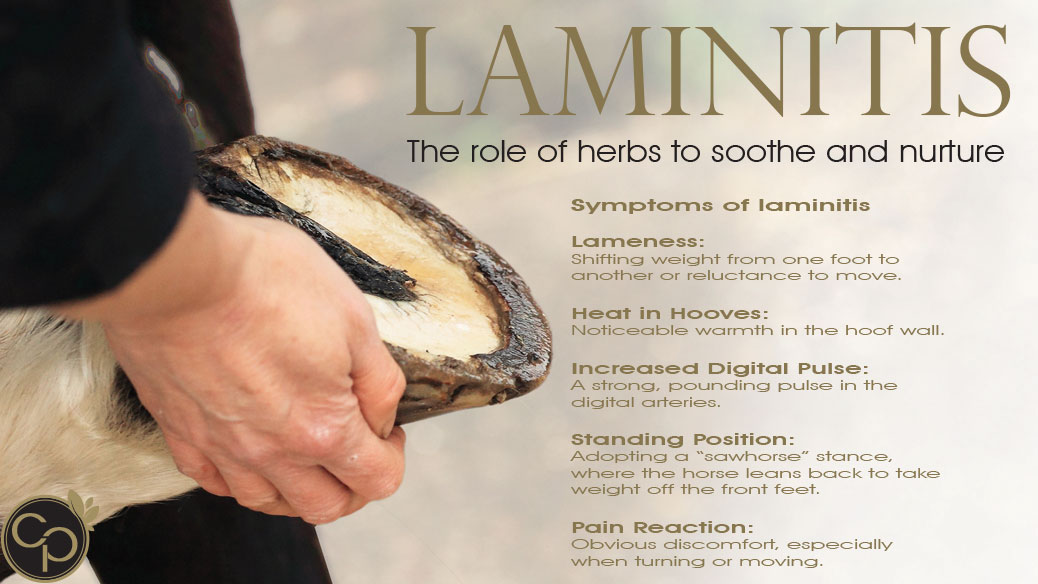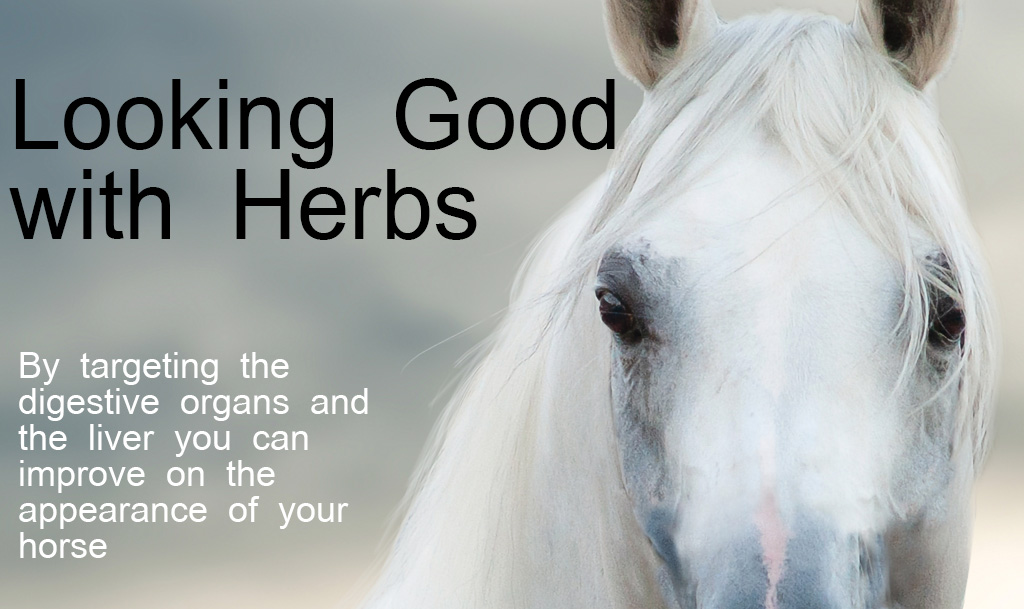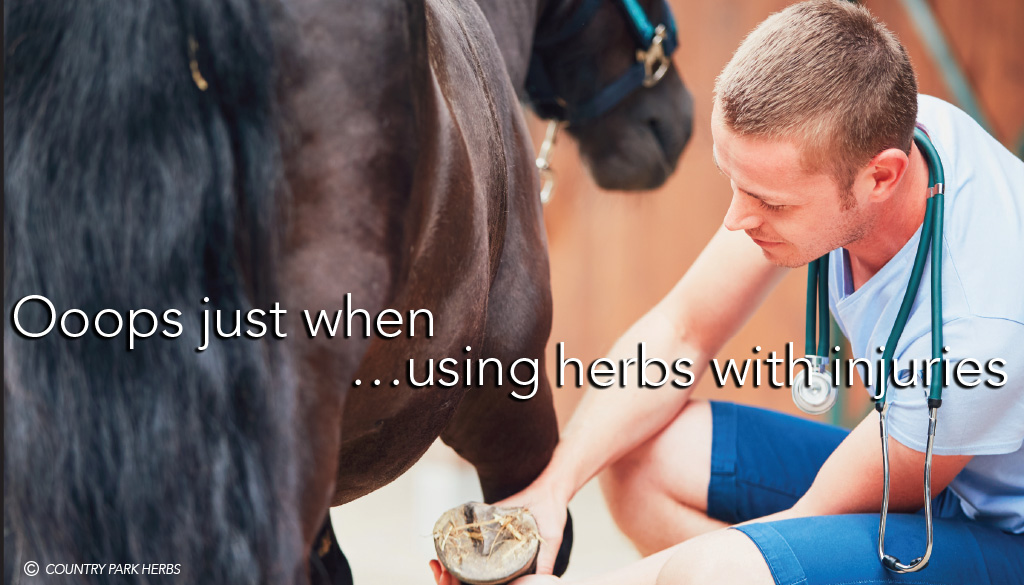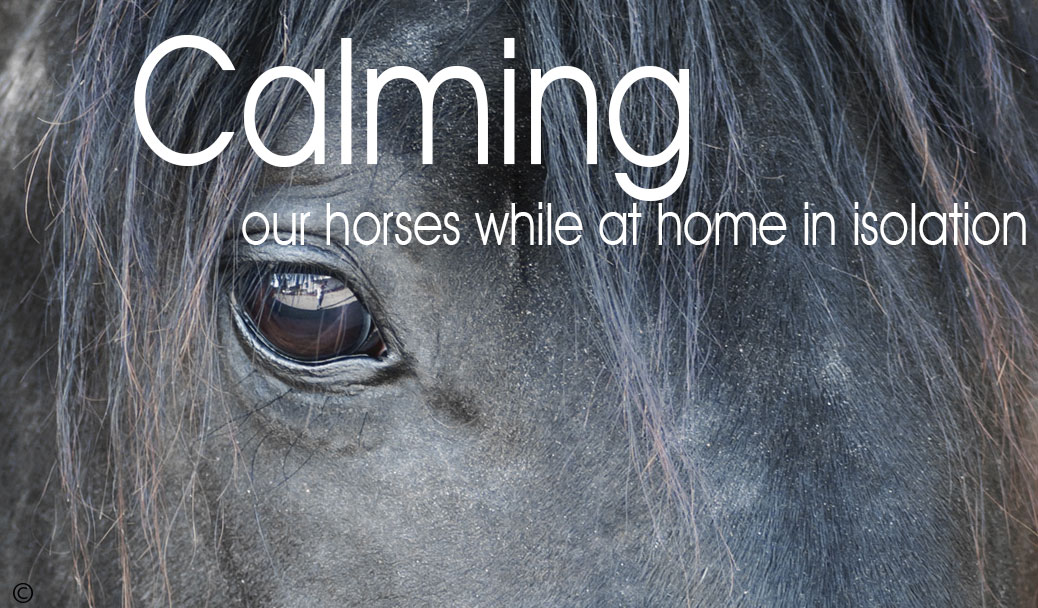There are a lot of differing opinions on how to address laminitis. To help with understanding how herbs can be used to assist with recovery and help strengthen the hoof against further episodes, Hilary Page Self in A Modern Horse Herbal gives an explanation of the process which in turn assists in understanding the role of herbs:
Laminitis in simple terms, is the inflammation of the sensitive laminae in the hoof. The blood supply to the hooves is disturbed, and subsequently areas such as the laminae do not receive an adequate supply of blood. Because of the lack of blood there is a reduction in oxygen reaching the cells, which causes them to become damaged and die. Damage to the cells creates inflammation and subsequently pain and swelling which, because it is restricted within the tough hoof wall, intensifies the discomfort.
Breaking this down, addressing inflammation and blood supply are two key elements in your approach to laminitis. While these are being addressed then other herbs can continue with nutritionally encouraging the hoof back to a healthy state. Then the use of herbs is ongoing to reduce the likelihood or severity of laminitis, prior to and during danger periods.
Two key nutritional herbs for supporting the horse prone to laminitis are clivers and nettle leaf. If there is one of these herbs in your approach at any stage, you can build your herbal mix around the one you have chosen. Selecting clivers or nettle leaf safely assists the nutritional needs of the horse who is on a restricted diet.
If you are having difficulty choosing which one; clivers is a lymphatic herb and can be very helpful if the horse also has a history of greasy heel or abscesses, whereas nettle leaf may be suited more to a horse with other inflammatory issues like arthritis or itch.
Dandelion leaf is another herb that helps feed the hoof and combines well with both clivers and nettle leaf. Clivers is rich in silica, calcium, copper, iodine and sodium. Nettle leaf adds vitamin C and iron that strengthen and enhance circulation. Dandelion leaf adds phosphorus, magnesium, and potassium to the mix. Seaweed meal for a few months during recovery can also assist with nutritional needs. Do not limit your choice to strictly one nutritional aspect as each of these herbs contain a broad nutritional profile.
Liver herbs are always useful in recovery, burdock root is beneficial with blood cleansing actions and the ability to reduce swelling. If the bout of laminitis has been caused by drugs, St Mary Thistle seeds can help the liver and kidneys process the effect.
Where the laminitis has come on after a stressful event, chamomile can support the horse’s nervous system and also feed the muscles in the shoulders or hind that can lose tone from not being able to walk with the same confidence while sore. Chamomile will help the tense horse restricted to a small yard.
In the initial acute stage of the inflammation, follow your veterinarian’s advice. If they suggest a pain relief, follow that advice as it will be the best way to get the nasty phase of inflammation manageable. When your veterinarian is satisfied with how your horse is progressing you can follow on with herbs such as devils claw and turmeric powder. The devils claw is a highly anti inflammatory herb and supporting it with turmeric, the turmeric settles the gut and assists the liver with eliminating any excess ‘drugs’ left in the system.
Another combination for pain is white willow bark with hawthorn berry and/or leaf. These two herbs given together enhance each other, they both help with improving circulation. They can settle tender hooves, and leave room to add devils claw if there is a flare up in the discomfort levels.
Follow-on hoof management will be built around the nutritional herbs. For the horse or pony in need of weight management, herbs such as fennel seed and cinnamon can be included in a small amount to assist metabolism.
When a horse has laminitis, herbs can broadly address any stage. A simple approach is often more effective than using every herb that has some influence on the hoof. Choose a nutritional herb, support the horse’s circulation and one or two other herbs that sustain the horse through recovery.
A proactive support for ponies’ hooves is Country Park’s Spring Blend. It mirrors the approach outlined in this article. The nutritional elements covered with clivers, circulation with hawthorn and capsicum, mild inflammation with celery seed and rosehips, with vervain to settle the nerves.
Using herbs is only one component of dealing with laminitis. A quick diagnosis from a veterinarian and support from a hoof specialist are primary in caring for the horse predisposed to this condition.
Disclaimer: The information provided in this article is for educational purpose only. Some herbs are unsuitable with certain conditions, pregnancy, medications, and competition. As this article does not replace medical treatment, seek advice from your veterinary practitioner before using herbs. Consult your governing sporting body when using herbal products to ensure you do not contravene regulations. Copyright: Catherine Bird has been an equine natural therapist for 35 years working closely with Country Park Herbs for over 23 years offering advice to their clients.






